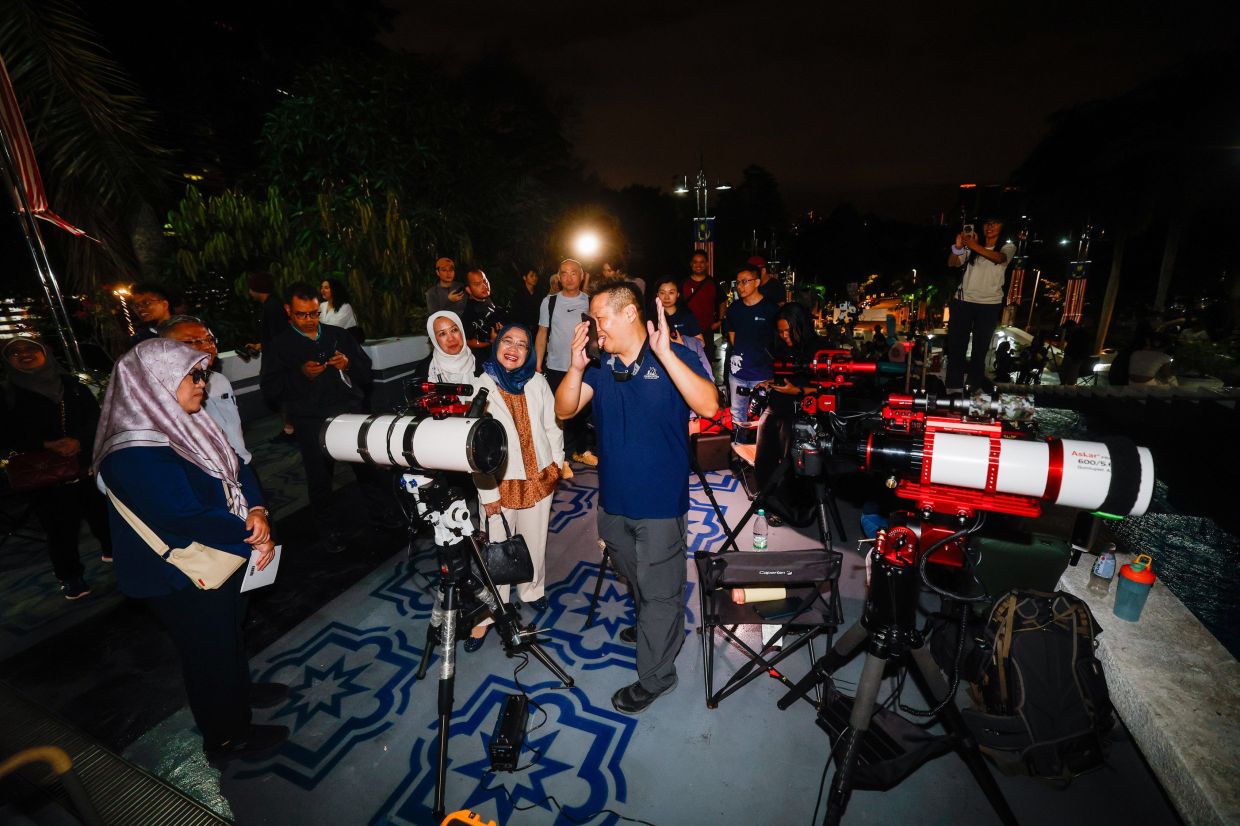
KUALA LUMPUR: Approximately 500 visitors flocked to the National Planetarium as early as 9pm last night for its Observation Programme to witness the total lunar eclipse, or ‘blood moon’.
Although the phenomenon was not fully visible due to overcast skies, the public still had the opportunity to view the penumbral lunar eclipse around 11.30pm.
A penumbral eclipse occurs during the full moon, causing a subtle dimming as it is obscured by the Earth’s shadow. It requires a telescope pointed east to be properly observed.
A visitor, Norazura Mohd, 38, said the first-time experience of viewing the event with her children through a telescope was an excellent early introduction to astronomy.
“My second child is very interested in astronomy and was extremely excited when we found out about this programme. Even though we didn’t get to see the blood moon, they at least got to see the penumbral eclipse through a telescope. Exposure to science like this is very beneficial for them,” she told Bernama.
Another visitor, 27-year-old Farisha Azmira Mohd Naim, said she was excited to see the ‘blood moon’ for the first time, describing the phenomenon as proof of divine power.
“I found out about it on the National Planetarium’s official social media and came here early at 9pm from Meru, Klang with my friends. Although we weren’t fortunate enough to see it, I’m still very satisfied to have experienced this atmosphere with the public. It felt like getting closer to the universe created by God,” she said.
Five telescopes were set up for the event, including one dedicated to a live broadcast on the Planetarium’s official social media channels.
Meanwhile, National Planetarium director Mohd Zamri Shah Mastor explained that the moon changes colour because the Earth blocks direct sunlight from reaching it. The red hue is caused by sunlight being refracted through the Earth’s atmosphere.
“This eclipse began at 11.28pm on Sunday with the penumbral phase, reached its peak around 2am, and was forecast to end at 4.55am,” he said.
A lunar eclipse comprises several phases: Penumbral begins, Partial begins, Total begins, Maximum eclipse, Total ends, Partial ends, and Penumbral ends.
Also present at the event was the Science, Technology, and Innovation Ministry deputy secretary-general (Science Planning and Culture), Ruziah Shafei. – Bernama






